A Short And Helpful Guide For Collecting Costume Jewelry
You may have heard of costume jewelry referred to as junk jewelry…
With so many types of costume jewelry floating around it can be daunting at first if you are looking for information or are new to collecting. Are you wondering about the different styles, price ranges, and materials of costume jewelry? Are you curious about a piece you already have? Read on to find out more about costume jewelry and collecting.
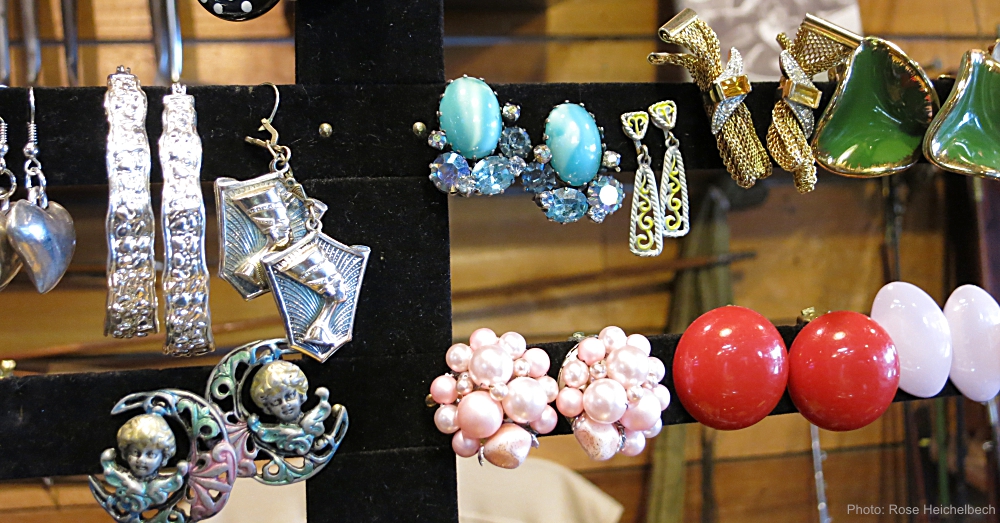
History
We tend to think of costume jewelry as a modern invention, rooted only in 20th century. You may have heard costume jewelry referred to as “junk jewelry,” implying that the craftsmanship is poor and the materials cheap. While the market greatly expanded in the 20th century, “paste” stones were used as early as the 18th century to imitate precious and semi-precious stone settings. Victorian and Edwardian brooches that feature brass findings and cut or molded glass are also not unusual.
The invention of faster machining and molding for glass and metal and the varying types of plastics created in the 20th century lead to an explosion of available colors, weights, and designs in costume jewelry. Some of the most collectible costume jewelry was made between 1900 and 1930, though some later examples can be quite desirable as well. The Art Deco period saw a number of designers making costume jewelry more famous and more stylish. Designers like Coco Chanel, Miriam Haskell, and Alfred Phillipe (Trifari) produced designs that were highly desirable and sold well, ensuring that the costume jewelry market thrived for decades to come.
Why Collect?
The main appeal of costume jewelry is the low cost and great versatility the pieces provide. You could own a costume jewelry necklace to go with each of your dresses, while owning that many fine jewelry pieces might be financially attainable. Before costume jewelry became more common, lower and middle class women may have owned one or two fine jewelry items, if that.
Not only affordable, costume jewelry provides an array of designs and colors that are nearly endless. Large sparkling stones of glass or acrylic give an appearance few of us could afford with fine jewelry. The low risk and high style of costume jewelry continues to delight buyers and collectors. Today, costume jewelry pieces can sell into the thousands, depending on the provenance of the pieces.
What to look for
Some of the most collectible pieces of costume jewelry will be marked. Early Miriam Haskell pieces retain their value well, while newer Haskell pieces can sell for far less. Trifari prices also tend to fluctuate, especially since there were many similar necklaces created (i.e. choker length off-white pearls). The mark will often be on the clasp for necklaces, the back mount or pin for brooches, inside band of rings, and various places on earrings. While unmarked pieces may also sell well, identifying a mark can help you date and price a piece appropriately, as well as help with research.
Rhinestone Jewelry
Glass or acrylic stones may be pasted into place or held in by metal prongs. Frequently, rhinestones are seen as prong-set in an interlocking chain with stones that are square. These can be well-made or quite cheap. How well the rhinestones on a piece have kept their color can affect value. Rhinestone jewelry pieces can be quite old, so you might not find a signature on older piece. Valuation on rhinestone pieces is associated with age or maker, so examine your piece closely. Does it seem new or light and bear no mark? Then it is probably a reproduction and has little value beyond that of its aesthetic.
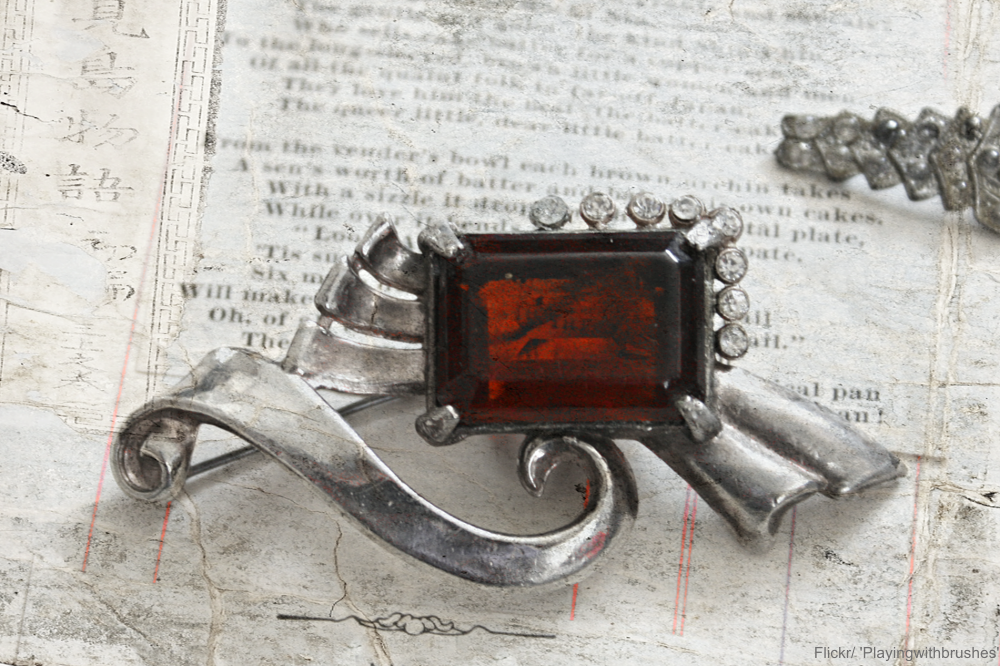
Plastic Jewelry
Celluloid was one of the first plastics used in jewelry and was often meant to simulate ivory or coral. Some of these jewelry items can be quite collectible, but they are also more fragile and fewer examples survive. Often mounted using prongs or other attachments, celluloid severed as a stand-in for natural cabochons in rings, necklaces, and cameos. Celluloid jewelry items can be highly desirable, especially when labeled correctly.
The durability, color tones, and weight made Bakelite (and its cousin Catalin) more desirable than celluloid. Bakelite jewelry is some of the most collectible jewelry at the moment (read more about the identification process here). The most prized pieces of Bakelite jewelry are often unmarked bangle bracelets. Take care to identify your potential Bakelite pieces through careful inspection of the material. Beware of modern pieces which may look similar.
A note about resin: Resin jewelry and cabochons have become very popular in the last decade. They can fool the eye by being made to look like early plastics. Resin will be heavier than celluloid, produce no smell when heated like Bakelite, and be more opaque than most acrylic pieces.
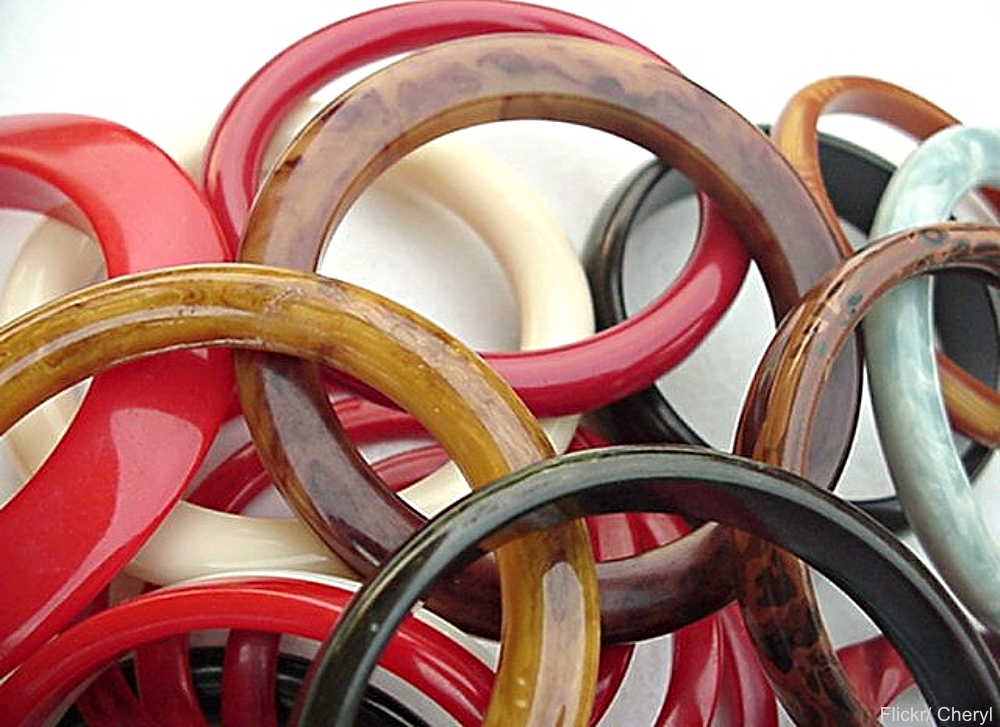
Acrylic was able to be formed using injection molding and take additives(as was Lucite). These two plastics came to replace Bakelite in the costume jewelry market. Very durable in clear form or with the additions of tint or sparkle, acrylic jewelry is still one of the standards in costume jewelry. Faux tortoise and moon glow are two very popular styles of acrylic that are still being made today.
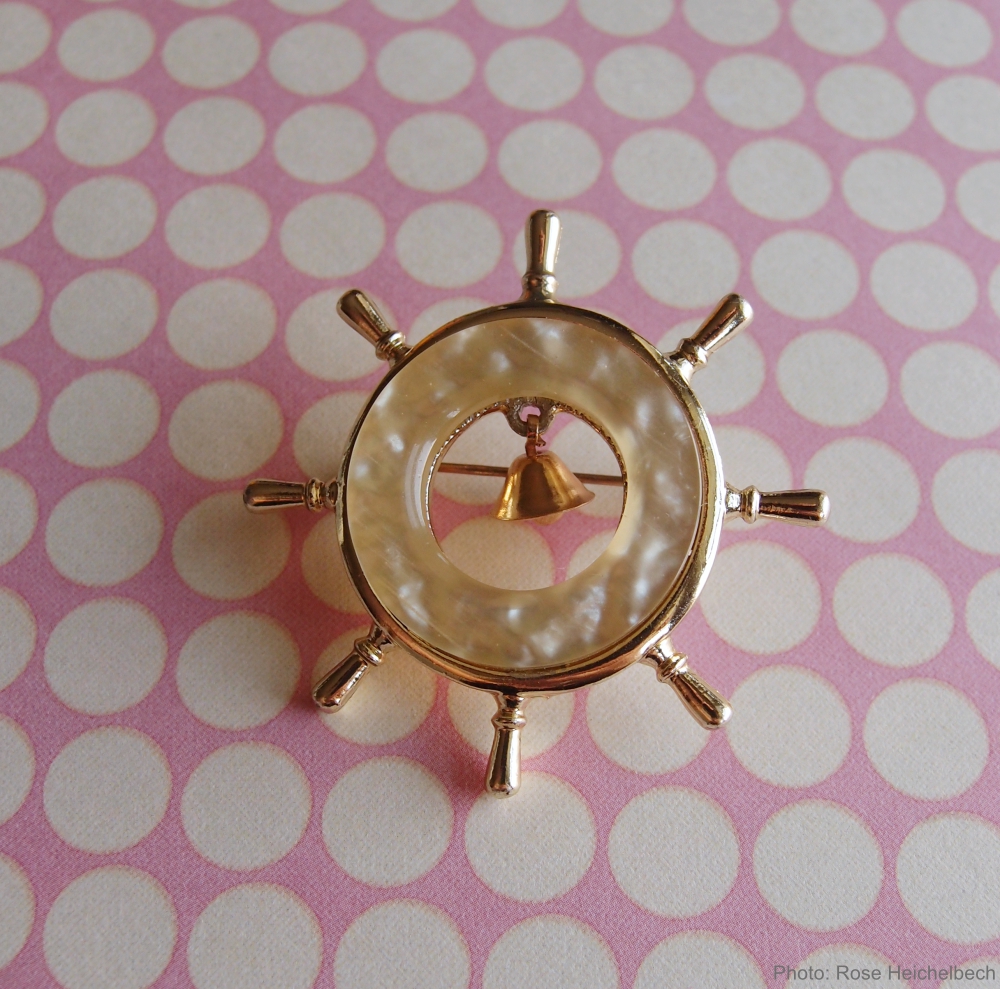
Metal
Some very collectible pieces of costume jewelry were made entirely from metal. Brass is the most common metal in jewelry, but items made from lead, copper, and alloys are abundant. Plated pieces are very common as well, which shows clearly when they have been well-worn. The most recognizable item of metal costume jewelry may be the brass cuff. Found at high and low price points, these pieces are often marked and will blend nicely with most shades of gold.
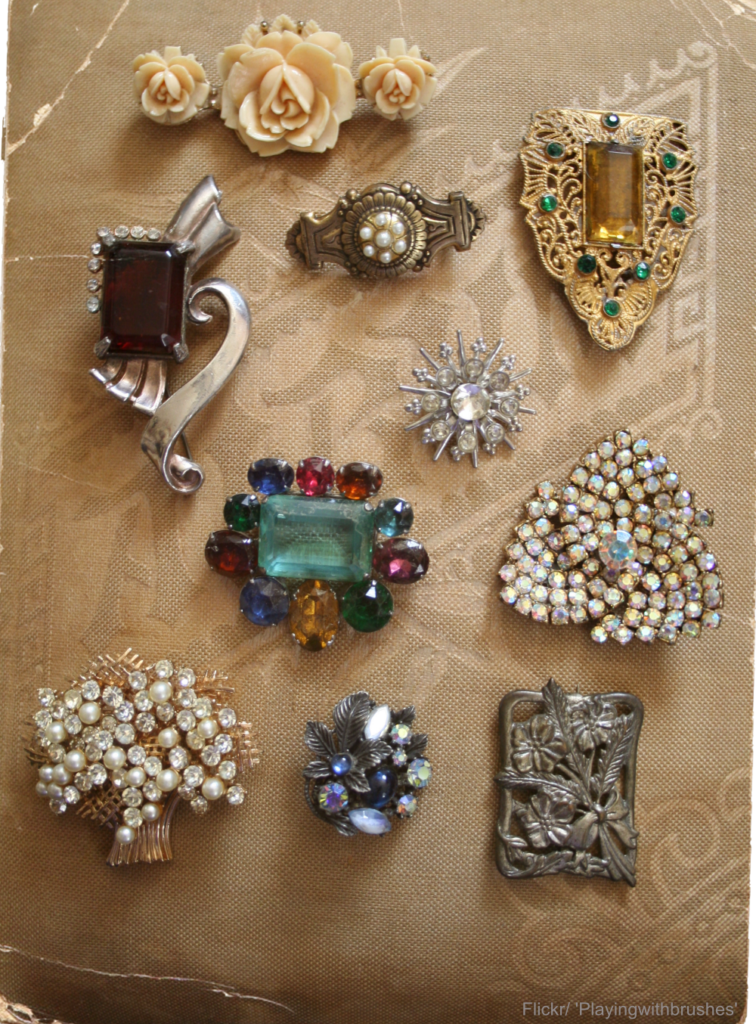
While collecting costume jewelry entails learning a lot about different designers, materials, and eras, it can also be very rewarding. With so many pieces available at nearly any second-hand shop, starting a collection is easy. Make sure you choose items that appeal to you and do some research about their origins to find out which makers you like. If you need to know values, don’t rule out contacting an appraiser.
While most costume jewelry pieces usually go for under $30, there are some that sell for prices comparable to fine jewelry. If you have a large collection and plan to liquidate, the cost of an appraisal can usually be recovered once you sell.
What are some your favorite costume jewelry pieces?
Tell us in the comments!
SKM: below-content placeholderWhizzco for DOT

